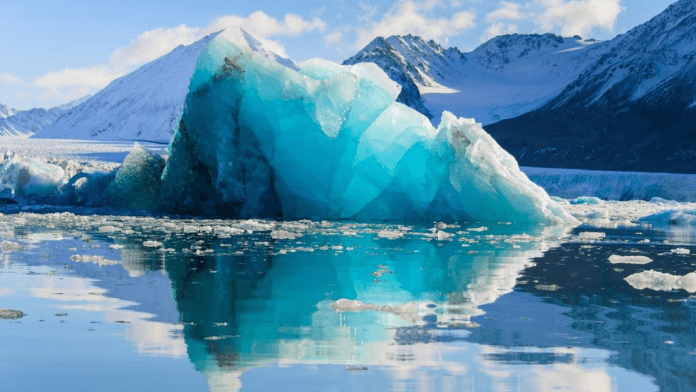🕒 Last updated on July 29, 2025
The Arctic is warming faster than many other parts of the planet. This warming is not only melting ice and snow—it’s also affecting thousands of lakes spread across the Arctic region. These lakes are not as harmless as they seem.
Melting Arctic Lakes Could Be Dangerous Methane Sources
They hold large amounts of methane, a greenhouse gas that is much stronger than carbon dioxide.
The ability of methane to trap heat in the atmosphere is more than 25 times greater than that of carbon dioxide. Even small increases in its release can have a big impact on climate change.
Until recently, scientists did not fully understand how methane was being produced and released from Arctic lake sediments. But a new study has uncovered important clues. Researchers studied 10 lakes across the Arctic, from Svalbard to subarctic Scandinavia. They found that the productivity of the lakes—meaning how many plants, algae, and other organisms are growing in them—has a big effect on methane emissions.
Lakes with more plant growth released more methane. This is especially true for lakes that are shallow. In these lakes, sunlight can easily reach the bottom, helping more plants and algae grow. That plant material settles in the sediment and becomes food for microbes. These microbes then produce methane as they break down the organic material.
🌊 Freshwater Vanishing at Alarming Speed — Four Mega-Regions Face Collapse
The study found that most of the methane is produced within the top 10 centimeters of the lakebed. There are a lot of active bacteria and fresh plant matter in this thin layer. Methane production and release are facilitated by the combination.
Some Arctic Lakes Emit More Than Others
The team of researchers also discovered that not all Arctic lakes behave the same way. Even lakes that are close to each other can have very different methane emissions. The reason for this is that every lake has a unique mix of vegetation, shape, water depth, and sediment type. These factors all affect how much methane the lake produces and releases.
This means that it’s not enough to study just a few lakes and make guesses about all the others. Each lake must be studied carefully to understand its role in the Arctic’s changing climate. The findings also show that even though methane emissions from individual Arctic lakes may be lower than tropical lakes, they are still very important. That’s because there are so many lakes in the Arctic. When you add them all up, the total amount of methane being released can be very large.
What’s surprising is that Arctic lakes are showing emissions similar to some boreal lakes found in northern forests. This challenges the earlier belief that Arctic lakes are quiet players in the global methane story.
To get a clearer picture, the research team compared their Arctic data with information from over 60 lakes around the world. They also used machine learning models to figure out which factors are most important in driving methane release. Their models confirmed that the biggest factors are biological productivity and climate conditions like temperature and rainfall.
🧱 Finland builds world’s largest sand battery — and it’s heating homes without oil or pollution
Climate Changes May Trigger Methane Boost
As the Arctic gets warmer and wetter due to climate change, more plants and algae are growing in and around lakes. This means that the lakes are becoming more productive. While this might sound like a good thing, it also leads to more methane being created and released from the lakebeds.
This research shows how small changes in temperature and rainfall can cause big changes in how Arctic lakes behave. Even a few extra degrees of warmth or a little more rain can lead to more plants, more microbial activity, and a higher release of methane gas.
This is a big deal because the Arctic is already changing faster than most other regions on Earth. With longer growing seasons and warmer temperatures, Arctic lakes are likely to continue getting more productive. And as this happens, they may start releasing even more methane into the air.
Understanding how these lakes work is important for predicting future climate changes. The study highlights that Arctic lake sediments are an essential part of the region’s greenhouse gas emissions. Ignoring them could mean underestimating how much methane is actually entering the atmosphere.
Climate Convergence Has Begun: 6 Global Systems Are Collapsing at Once
The Arctic might seem far away, but the changes happening there affect the whole planet. The hidden methane in its lakes is just one more reminder of how complex and connected our Earth system is.

